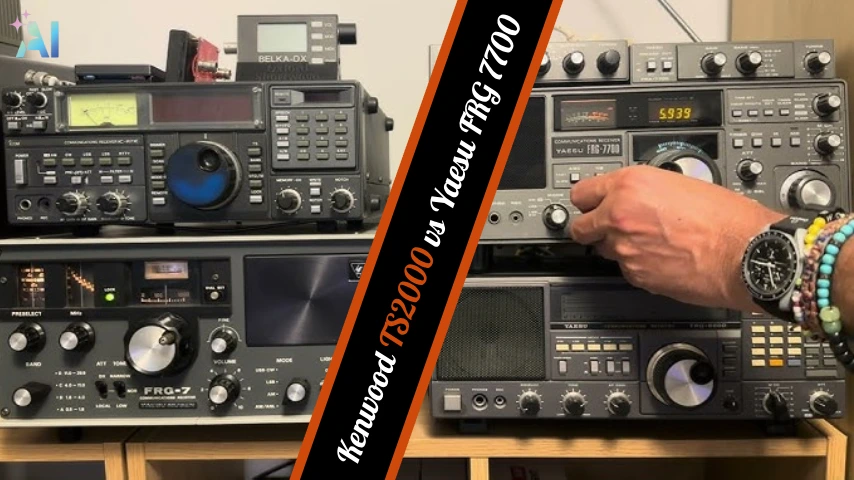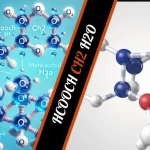The Kenwood TS2000 and Yaesu FRG 7700 are two well-regarded radios that have made significant contributions to amateur radio. While separated by their eras, both continue to be relevant. The TS2000 is a versatile, all-in-one transceiver, while the FRG 7700 is a classic, dedicated receiver. This article will explore the features, performance, and ideal users for each radio.
Technical Specifications
- Frequency Coverage: The Kenwood TS2000 is a wide-band transceiver, covering HF, VHF, and UHF frequencies (160m to 70cm bands). The Yaesu FRG 7700 is an HF receiver (0.15-30 MHz).
- Modes of Operation: The TS2000 supports AM, FM, SSB, CW, and digital modes. The FRG 7700 supports AM, SSB, CW, and FM.
- Power Output: As a transceiver, the TS2000 transmits with 100W on HF and 6m, 50W on 2m, and 50W on 70cm. The FRG 7700 is receive-only.
- Receiver Sensitivity: Both radios offer good sensitivity. The TS2000 performs well across its entire frequency range. The FRG 7700 remains competitive, particularly on lower HF frequencies.
Design and Build
- Physical Dimensions: The TS2000 measures 281 x 107 x 371 mm and weighs 7.8 kg. The FRG 7700 is more compact, measuring 334 x 129 x 225 mm and weighing 6 kg.
- Display and Controls: The TS2000 features a large, color display with many buttons and knobs. The FRG 7700 has a more basic analog display with essential controls.
- Durability: Both radios are built to last, with the TS2000 using modern materials and the FRG 7700 showcasing the robust construction of its time.
Key Features
Kenwood TS2000:
- Built-in antenna tuner for HF and 6m bands.
- Dual receivers for simultaneous frequency monitoring.
- Digital Signal Processing (DSP) for improved signal quality.
- Satellite operation capabilities.
Yaesu FRG 7700:
- Digital clock with timer functions.
- Memory channels.
- Selectable IF bandwidths.
- Optional FRT-7700 antenna tuner.
Performance
- Signal Reception: The TS2000’s modern technology excels in various signal conditions. The FRG 7700 performs well in pulling in weak signals, especially on lower bands.
- Noise Reduction: The TS2000 utilizes DSP for noise reduction. The FRG 7700 uses traditional noise blanking.
- Selectivity and Filtering: The TS2000 has multiple IF filters and DSP filtering options. The FRG 7700 provides multiple IF bandwidth options.
Versatility
- Multi-band Operation: The TS2000 covers HF to UHF bands. The FRG 7700 is limited to HF.
- Additional Functionalities: The TS2000 includes a built-in TNC for packet radio, RTTY, and satellite operation. The FRG 7700 focuses on providing excellent listening capabilities.
User Interface
- Ease of Use: The TS2000’s interface can be complex due to its many features. The FRG 7700 is more straightforward.
- Customization: The TS2000 offers extensive customization via its menu system. The FRG 7700 has fewer options but is more immediately accessible.
Connectivity
- Antenna Options: The TS2000 provides multiple antenna connections for various bands. The FRG 7700 has separate inputs for shortwave and longwave/medium wave antennas.
- Computer Interface: The TS2000 can interface with computers for control and digital modes. The FRG 7700 lacks built-in computer interfacing.
Price and Value
- Cost: The TS2000 is more expensive as a modern transceiver. The FRG 7700 can be found on the used market for less.
- Long-term Value: The TS2000 is a versatile investment for serious ham operators. The FRG 7700 is a good entry point for shortwave listening enthusiasts.
Who is Each Radio For?
- Kenwood TS2000: Ideal for ham operators needing all-band coverage, satellite communications, and a do-it-all radio.
- Yaesu FRG 7700: Suited for shortwave listening enthusiasts, vintage radio aficionados, and beginners seeking a user-friendly receiver.
Pros and Cons
| Aspect | Kenwood TS2000 | Yaesu FRG 7700 |
|---|---|---|
| Pros | Wide coverage, multiple modes, DSP | Excellent HF reception, simple interface |
| Cons | Complex, higher cost | Receive-only, older technology |
DXing and Audio Quality
- DXing: The TS2000’s filtering and noise reduction aid in pulling weak signals. The FRG 7700 performs well on lower HF bands.
- Audio Quality: The TS2000’s DSP allows audio fine-tuning. The FRG 7700 is known for its warm, natural sound.
Conclusion
The Kenwood TS2000 and Yaesu FRG 7700 cater to different needs. The TS2000 is a comprehensive transceiver for diverse ham radio activities. The FRG 7700 excels as a dedicated shortwave receiver. The choice depends on individual interests and priorities.






Absolutely composed subject matter, appreciate it for entropy.